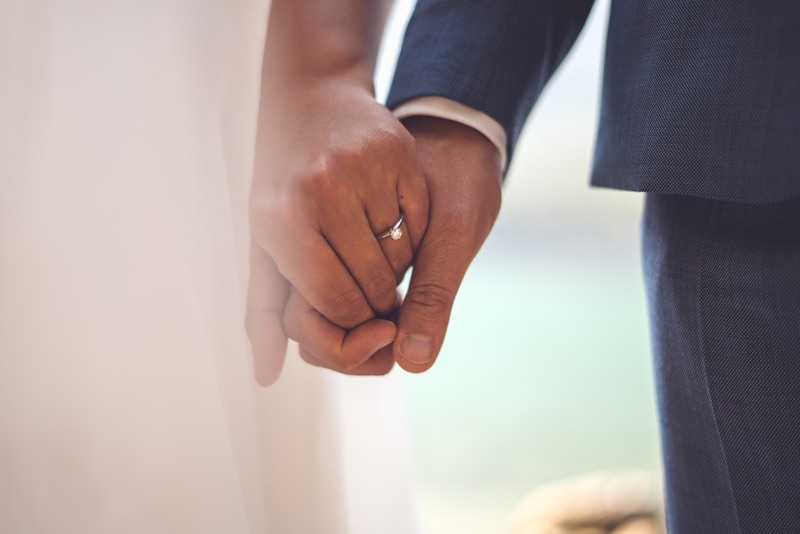Exploring the Roots of Marriage Traditions: A Cultural Journey
Understanding the Roots of Marriage Traditions
Marriage is a significant milestone in the lives of many individuals, symbolizing love, commitment, and the union of families. Yet, the traditions surrounding marriage vary greatly across cultures. In this article, we will explore the roots of marriage traditions, delving into their historical backgrounds, religious influences, and the evolution of these practices over the years. By understanding these roots, we can better appreciate the richness of our diverse cultures and how they shape our current marriage practices.
Historical Background of Marriage Traditions
The concept of marriage has existed for millennia, with roots tracing back to ancient civilizations. In many societies, marriages were primarily arranged for economic or political reasons. For instance, in Ancient Rome, marriages were seen as a means of consolidating power and wealth among the elite. Similarly, in Medieval Europe, royal marriages were often predetermined to forge alliances between powerful families.
As societies evolved, so did their perception of marriage. The shift from arranged marriages to love-based unions occurred during the Enlightenment period, which emphasized individualism and personal choice. This transformation laid the groundwork for modern marriage traditions, where love is often at the forefront.
Influence of Religion on Marriage Traditions
Religion has played a profound role in shaping marriage traditions around the world. Different faiths offer unique rituals, customs, and legal frameworks regarding marriage. Below are a few examples of how various religions influence marital practices:
| Religion | Marriage Traditions |
| Christianity | Weddings often take place in churches, emphasizing the sacred nature of the union. |
| Islam | Marriage is viewed as a contract, and ceremonies often include the signing of a marriage agreement. |
| Hinduism | Many rituals, such as Saptapadi, involve sacred vows taken around a fire. |
| Buddhism | Emphasis on mindfulness and commitment, with ceremonies that focus on inner peace. |
| Judaism | Weddings often involve a ketubah (marriage contract) and the breaking of a glass. |
This table illustrates just a few ways that religion contributes to the diversity of marriage traditions worldwide. Each tradition carries with it significant cultural and spiritual importance, reflecting the values and beliefs of its community.
Regional Variations in Marriage Traditions
Marriage traditions can significantly differ from one region to another, influenced by local customs, social norms, and historical contexts. Here are a few notable examples:
North America
In the United States and Canada, Modern weddings often blend traditional and contemporary elements. Destination weddings have surged in popularity, with couples opting for tropical settings or historical venues to say their vows. Additionally, the rise of same-sex marriage has broadened the landscape, allowing for more inclusive celebrations.
Asia
Asian countries boast a rich tapestry of marriage customs. In Japan, traditional Shinto weddings involve elaborate rituals, while in India, colorful Hindu weddings can last several days and involve numerous ceremonies. These events often highlight the importance of family and community, contrasting with more individualistic Western ceremonies.
Europe
In European countries, traditions can vary widely. For example, in Italy, the wedding feast is a central part of the celebration, showcasing local cuisine and wines. In contrast, Scandinavian weddings may focus on simplicity and nature, often held outdoors with minimal decoration.
Africa
African marriage customs are diverse, reflecting the continent's multitude of ethnic groups. In many cultures, bride price customs, where the groom pays a fee to the bride's family, are prevalent. Additionally, communal celebrations are common, emphasizing the unity of families and communities.
The Evolution of Marriage Traditions
As societies evolve, so too do their marriage traditions. In recent years, there has been a noticeable shift towards personalized weddings that reflect the couple’s unique story. Factors such as globalization, technological advancements, and changing social norms have influenced this evolution.
For instance, many couples now include cultural elements that represent both partners, creating a fusion of traditions. Additionally, technology has changed how weddings are planned and executed, with virtual ceremonies becoming a viable option during the COVID-19 pandemic.

Common Questions About Marriage Traditions
As people explore the roots of marriage traditions, several related questions often arise. Here are some common inquiries:
- What are the most common marriage traditions worldwide? Marriage traditions vary widely, but some common elements include vows, rings, and celebrations with family and friends.
- How do cultural differences impact marriage traditions? Cultural differences shape the rituals, ceremonies, and significance placed on marriage, leading to diverse practices across communities.
- What is the significance of wedding rings in marriage traditions? Wedding rings symbolize eternal love and commitment, with their origin dating back to ancient Egypt.
- How have modern influences changed traditional marriage practices? Modern influences have led to more personalized weddings, inclusion of same-sex marriages, and the rise of virtual ceremonies due to technological advancements.
Conclusion: Embracing the Diversity of Marriage Traditions
Understanding the roots of marriage traditions allows us to appreciate their significance in various cultures. As we celebrate love and commitment through marriage, it’s essential to recognize the historical, religious, and societal contexts that shape these traditions. By embracing the diversity of marriage practices, we foster a greater understanding of one another and promote inclusivity in a world rich with cultural heritage.
As you plan your wedding or reflect on marriage traditions, consider incorporating elements that resonate with you and your partner. Whether it’s honoring your cultural roots, merging traditions, or creating new customs, the authentic celebration of love is what truly matters. Remember to keep an open mind and heart, appreciating the beauty in both the similarities and differences of global marriage traditions.